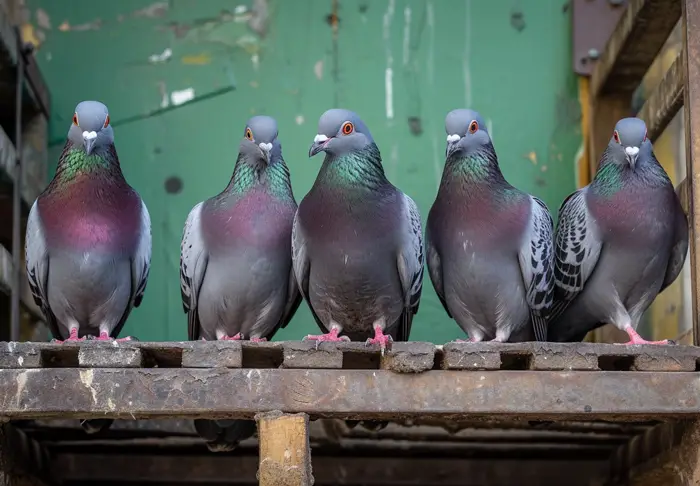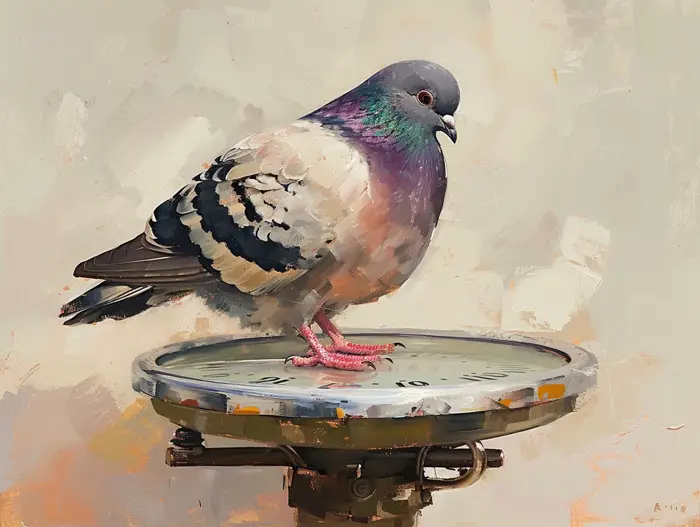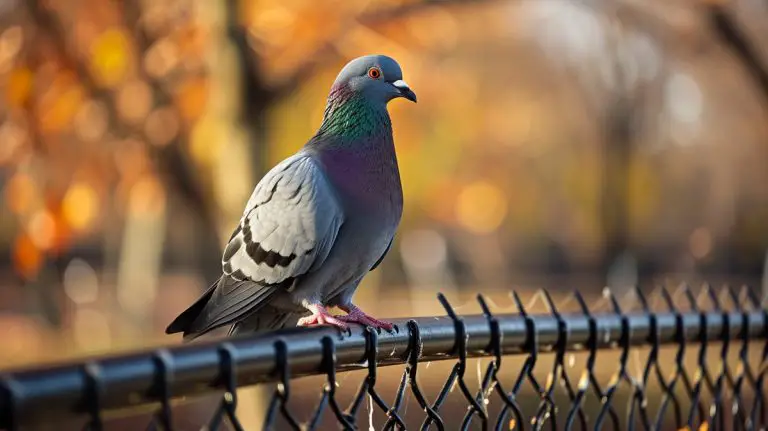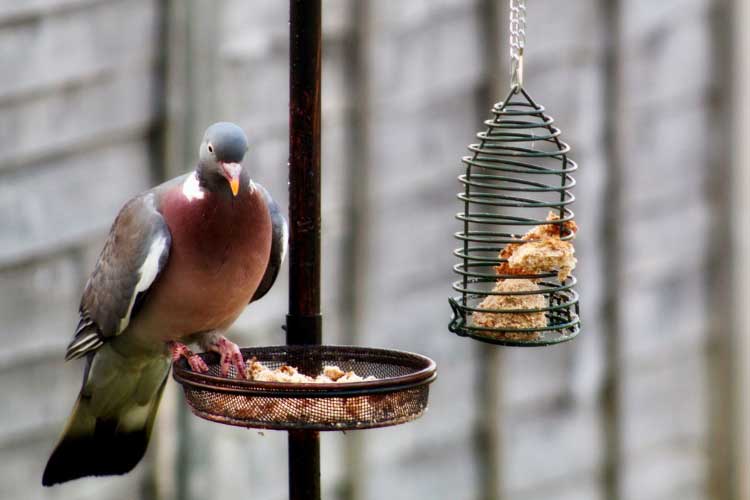Pigeon Weight in Aviation: Significance and Impact
Have you ever wondered how much a pigeon weighs? Well, I certainly have! As an avid bird enthusiast, I’ve always been fascinated by these graceful creatures and their ability to navigate the skies with such ease. But when it comes to their weight, there seems to be a lot of confusion and misinformation out there. In this article, I’ll delve into the world of pigeon weight and provide you with some interesting insights and facts that you may not have known before. So, let’s spread our wings and explore the fascinating world of pigeon weight together!
Why Pigeon Weight is a Fascinating Topic
As an avid bird enthusiast, I have always found pigeons to be captivating creatures. The way they effortlessly soar through the skies, navigating their way with such grace, has always left me in awe. And one aspect of pigeons that has particularly fascinated me is their weight. Yes, you heard that right – pigeon weight.
You may be thinking, “Why is pigeon weight even a topic worth exploring?” Well, allow me to explain. Pigeons come in a variety of sizes and breeds, which directly affects their weight. Understanding the factors that contribute to their weight can provide us with valuable insights into their biology, behavior, and even their ability to fly.

Here are a few reasons why pigeon weight is a fascinating topic:
- Variety in Size: Pigeons come in all shapes and sizes. From the small and nimble homers to the larger and more muscular birds like the king pigeons, each breed has its unique characteristics. This diversity in size leads to variations in weight, which can play a role in the pigeon’s agility, endurance, and overall physical capabilities.
- Flight Performance: Pigeons are known for their remarkable ability to navigate long distances. Understanding the relationship between weight and flight performance can give us valuable insights into the strategies these birds employ to optimize their flights. By analyzing their weight, researchers can uncover how pigeons efficiently use their energy during long flights, helping us understand how they navigate over vast distances.
- Health Indicators: Pigeon weight can also serve as an indicator of their overall health and well-being. Just like humans, maintaining a healthy weight is crucial for pigeons. Monitoring their weight can help detect any potential health issues or fluctuations, allowing bird enthusiasts and researchers to take appropriate measures for their care.
- Breeding and Genetics: The weight of pigeons can also be influenced by breeding and genetics. By studying the weight variations within different pigeon breeds, researchers can gain insights into the genetic factors that contribute to their size and weight. This knowledge can be invaluable in breeding programs to produce healthier and more robust pigeons.
So, you see, there is more to pigeon weight than meets the eye. It’s a fascinating topic that offers a deeper understanding of these incredible birds and their unique capabilities. Join me as we delve further into the world of pigeon weight and uncover fascinating facts and insights along the way.
How to Determine the Weight of a Pigeon

To accurately determine the weight of a pigeon, there are a few methods that can be used. Here are some ways to measure the weight of these fascinating creatures:
- Hand-Weighing: One common method is to gently hold the pigeon in your hand and feel its weight. With experience, you can develop a sense of a pigeon’s weight by comparing it to other objects or birds of similar size. However, this method may not provide precise measurements.
- Use of a Scale: Using a precision scale is the most accurate way to determine a pigeon’s weight. A scale specifically designed for small animals, such as a gram scale, can be used. Carefully place the pigeon on the scale and record the weight displayed. This method provides a quantitative measurement of the pigeon’s weight.
- Comparison to Known Weights: Another way to estimate a pigeon’s weight is by comparing it to objects with known weights. For example, you can use household items like coins or small weights and place them on one side of a balanced scale, while the pigeon sits on the other. By adjusting the weight until the scale is balanced, you can estimate the pigeon’s weight based on the known weights used.
NOTE: Always ensure the safety and well-being of the pigeon during the weighing process. Gently handle the bird, minimizing stress and discomfort, and release it back to its environment afterward.
Determining the weight of a pigeon is essential for research, breeding programs, and monitoring their overall health. Understanding their weight can provide valuable insights into their biology, behavior, and flight capabilities.
By using the methods mentioned above, you can accurately measure the weight of a pigeon and contribute to the ongoing exploration of these remarkable creatures.
Average Weight of Common Pigeon Species
When it comes to understanding pigeons, knowing their average weight can provide valuable insights into their health and well-being. In this section, I’ll explore the average weight of common pigeon species, shedding light on the variations that exist within this fascinating group of birds.

Pigeons come in different shapes and sizes, and their weight can vary depending on factors such as age, gender, and subspecies. However, I’ll provide you with an overview of the average weights observed across some of the most common pigeon species:
- Rock Pigeon (Columba livia): On average, adult rock pigeons weigh around 9 to 13 ounces (250 to 370 grams). This species is known for its adaptability and is found in urban areas worldwide.
- Homing Pigeon (Columba livia domestica): As the name suggests, homing pigeons are known for their remarkable homing abilities. These birds typically weigh between 8 to 12 ounces (230 to 340 grams), similar to rock pigeons.
- Wood Pigeon (Columba palumbus): Wood pigeons are larger than the rock and homing pigeons, with an average weight ranging from 14 to 22 ounces (400 to 620 grams). These birds are commonly found in wooded areas and are known for their distinctive cooing calls.
- Collared Dove (Streptopelia decaocto): Collared doves are smaller in size compared to the aforementioned species, with adult weights ranging from 5 to 8 ounces (140 to 230 grams). These birds have a distinct black collar on their necks.
- Feral Pigeon (Columba livia domestica): Feral pigeons, also known as city pigeons or street pigeons, are descendants of domesticated pigeons. Their average weight falls within the range of 10 to 16 ounces (280 to 460 grams).
It’s important to remember that these weight ranges are general averages and can vary among individual birds. Additionally, weight can change due to factors such as diet, nesting, and seasonal fluctuations.
Factors that Affect the Weight of Pigeons
When it comes to the weight of pigeons, there are several factors that can influence it. Understanding these factors can help us assess the health and well-being of these birds. Here are some key factors that affect the weight of pigeons:

1. Diet: The type and quantity of food that pigeons eat play a crucial role in their weight. Pigeons are generally herbivorous, feeding on seeds, grains, fruits, and vegetables. A balanced diet with essential nutrients is important for maintaining a healthy weight.
2. Seasonal Fluctuations: Pigeon weight can fluctuate throughout the year due to seasonal variations in food availability and energy requirements. During breeding season, pigeons may gain weight to support egg production and chick-rearing activities. On the other hand, during migratory periods, they may lose weight as they travel long distances.
3. Age: Like with many animals, the weight of pigeons can change as they grow older. Young pigeons, or squabs, tend to have lower weights compared to adult pigeons. As they mature, their weight can increase.
4. Physical Activity: The level of physical activity can impact the weight of pigeons. Pigeons that have access to larger spaces and engage in more flying are likely to have lower weights compared to birds that are confined to smaller areas and have limited opportunities for exercise.
5. Health and Disease: Pigeons can experience weight loss as a result of various health conditions or diseases. Parasites, infections, or malnutrition can lead to weight fluctuations. It’s important to monitor the weight of pigeons as sudden or significant changes may indicate an underlying health issue.
Remember, the weight of pigeons can vary among individuals. These factors provide a general understanding of what can influence the weight of these birds. It’s important to consider the overall well-being of pigeons and consult a veterinarian or avian expert if you have concerns about their weight.
The Significance of Pigeon Weight in Aviation Studies
As a blogger with years of experience in researching and writing about pigeons, I have come across various fascinating aspects of these birds. One particular area of study that has caught my attention is the significance of pigeon weight in aviation studies. Believe it or not, pigeons have played a crucial role in understanding certain principles of aviation.

Pigeons have an incredible ability to navigate and find their way home over long distances, which has intrigued aviation researchers for decades. Studying their flight patterns and behavior has provided valuable insights into aerodynamics and flight mechanics. But how does pigeon weight come into the picture?
Pigeon weight affects their flight performance. Just like any aircraft, pigeons need to uphold a delicate balance of weight and lift to maintain stable flight. Too much weight can negatively impact their ability to maneuver and may even hinder their homing instincts. On the other hand, being too light may compromise their endurance. Thus, maintaining an optimal weight range is crucial for pigeons and aircraft alike.
Monitoring and analyzing pigeon weight has allowed researchers to gain a deeper understanding of aerodynamic principles. By tracking weight fluctuations and correlating them with flight performance, scientists have been able to refine aircraft design and enhance their efficiency.
Pigeon weight in aviation studies also highlights the significance of adjusting payload and fuel load in aircraft. Just as pigeons need to carry their navigation instincts and energy reserves, aircraft need to carry passengers, cargo, and fuel. Achieving the right balance of weight is vital for fuel efficiency, safety, and overall performance.
The significance of pigeon weight in aviation studies cannot be overstated. Studying the weight of these remarkable birds has provided valuable insights into aerodynamics, flight mechanics, and payload management. By drawing parallels between pigeons and aircraft, researchers have been able to improve the design and efficiency of aircraft, ultimately benefiting the world of aviation.
Conclusion
Understanding the significance of pigeon weight in aviation studies has provided valuable insights into aerodynamics and flight mechanics. By studying pigeons’ ability to navigate and find their way home, researchers have been able to refine aircraft design and enhance efficiency. Monitoring pigeon weight has allowed for adjustments in payload and fuel load, leading to improved fuel efficiency, safety, and overall performance in aircraft.
Pigeon weight plays a crucial role in determining flight performance, and the knowledge gained from studying it has had a direct impact on aviation. This research has highlighted the importance of considering weight distribution and balance in aircraft design, ensuring optimal performance during flight.
As aviation continues to evolve, the lessons learned from studying pigeon weight will continue to shape aircraft design and operation. By understanding the impact of weight on flight performance, we can strive for safer, more efficient, and more sustainable aviation practices. The study of pigeon weight is a testament to the valuable insights that can be gained from nature and applied to technological advancements in aviation.







